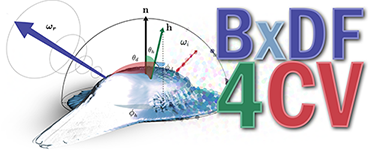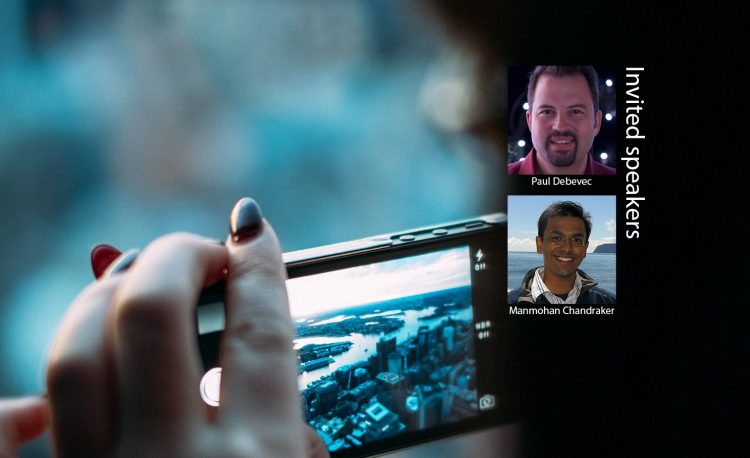A key challenge in computer vision is to infer object appearance, which is a combination of geometric shape and radiometric properties. Acquisition of geometric shape has been researched extensively over decades, and we have reached a point where several commercial solutions are available for scanning 3D geometry. With systems available for acquiring shape, the next natural step is to acquire radiometric properties from observing light-material interaction. A particular challenge in this endeavor is the decoupling of incident illumination and intrinsic material properties. This decoupling is necessary for inferring material properties and for simulating object appearance in an arbitrary illumination environment.
Intrinsic radiometric properties of materials are often represented by bidirectional reflectance and transmittance distribution functions (BRDF/BTDF) or the combination of these two (BSDF) or the more general bidirectional scattering-surface reflectance distribution function (BSSRDF). The latter differs from the others by allowing the point of incidence to be different from the point of emergence of the light. We use BxDF as a common term for these functions. Spatial variation of BxDFs and geometric variation of the object surface makes the acquisition of these functions highly challenging. An additional challenge is the high dimensionality of BxDFs (three to eight dimensions). This calls for strong data-driven BxDF models that make acquisition, representation, and application of BxDFs more practical.
One thing is measuring BxDFs in a controlled lab environment. We would like to take the subject one step further by also considering material classification, intrinsic images, and material capturing in the wild. The ultimate goal is BxDF capture in the wild, which requires further development of data-driven models so that they can form the basis of capture, reconstruction, and efficient inference. To facilitate this development, we propose a workshop on Data-Driven BxDF Models for Computer Vision Applications.
The topics to be covered in our workshop will be centered around methods for formulating, capturing, validating, compressing, and applying data-driven BxDF models, and especially their use within the field of computer vision.
We encourage you to submit your research on these topics to our workshop.

